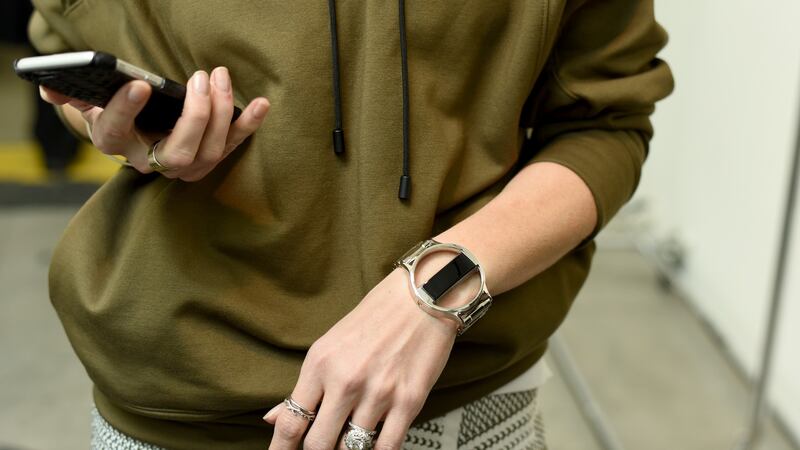Apple Watches, Misfits, Fitbits, Jawbones, Moovs and more: the fitness tracker is impossible to ignore. These captains of our physical industry are often smaller than a thumb, yet hold a huge amount of information about their owners.
They are worn on the wrist and count the steps the wearer takes and the intensity of the activity. They know when we are sleeping and when we’re awake. Thankfully, they do not know if we’ve been bad or good, so Santa holds on to his job. He will probably give many of us Fitbits anyway, the sales of which can triple or quadruple over the Christmas period.
The Fitbit is probably the best-known of the wearables on offer, so much so that it’s reaching Hoover-like ubiquity. All of these devices claim to do the same thing: keep you fit and healthy by showing you exactly what you are doing wrong. Most wearables hook up to your phone or computer, where data can be cross-referenced.


Personal style
Like all things that can be worn, fitness wearables have had a fraught relationship with personal style. They prioritise function over fashion, which until recently was not an issue, as many people only wore fitness trackers at the gym or during bouts of activity. However, as wearables can now monitor practically everything bar your Netflix preferences, people have taken to wearing them every day, and they want to look good while they do it.
Some luxury fashion houses make no secret of the fact that most of their profit are made from accessory sales. So it should come as no surprise to learn that the fashion wearable accessory industry is a quick-growing one. Take, for example, Blingtec, a company cofounded by jeweller and Harvard international business graduate Heloisa Fitzgerald. Blingtec specialises in spare but graphic talismans and add-ons rendered in silver, 18-carat yellow and rose gold.
Similar companies have popped up, such as Fitjewels, which has a more elaborate aesthetic at a medium price point. Interestingly, many of these bigger brands can be found on international marketplace website Etsy.com, where a string of sole traders have also taken to making handmade and small-batch accessories.
Fit by design
Unsurprisingly, the wearables companies themselves have observed the shift and capitalised on it with several designer collaborations. Most notably, Fitbit has worked with Tory Burch on a selection of silicone and precious metal-plated goods.
The Swarovski Activity Crystal, a collaboration between the Austrian gem maker and Misfit, a US-based wearables company, sounds like something you would try to win in a difficult round of the Crystal Maze. However, it does something many manufacturers have tried – and failed – to accomplish. The wearable is the fashion accessory itself, resembling nothing so much as a gigantic gem. It appears to be an innocuous (if blingy, slightly sci-fi) piece of jewellery, but also tracks your sleep, steps and other activities. The Swarovski Activity Crystal has been modelled by Miranda Kerr, and comes in pendant and suede bracelet sets. It is not currently available in Ireland, but chances are we won’t have to wait long.
On the high-fashion side of things, Kanye West favourite Public School has announced a collaboration with Fitbit. On the New York runways in February the uber-cool label debuted a line of accessories for the new Fitbit Alta, featuring a stainless steel bracelet with negative-space facing and a more conventional wraparound bracelet. Pre-orders are starting to mount, and they will be available to buy this autumn.
There are only so many ways to wear a wearable: on the wrist or around the neck. However, once we start visually treating it like jewellery instead of technology we will be able to absorb it into the fabric of everyday life.


















